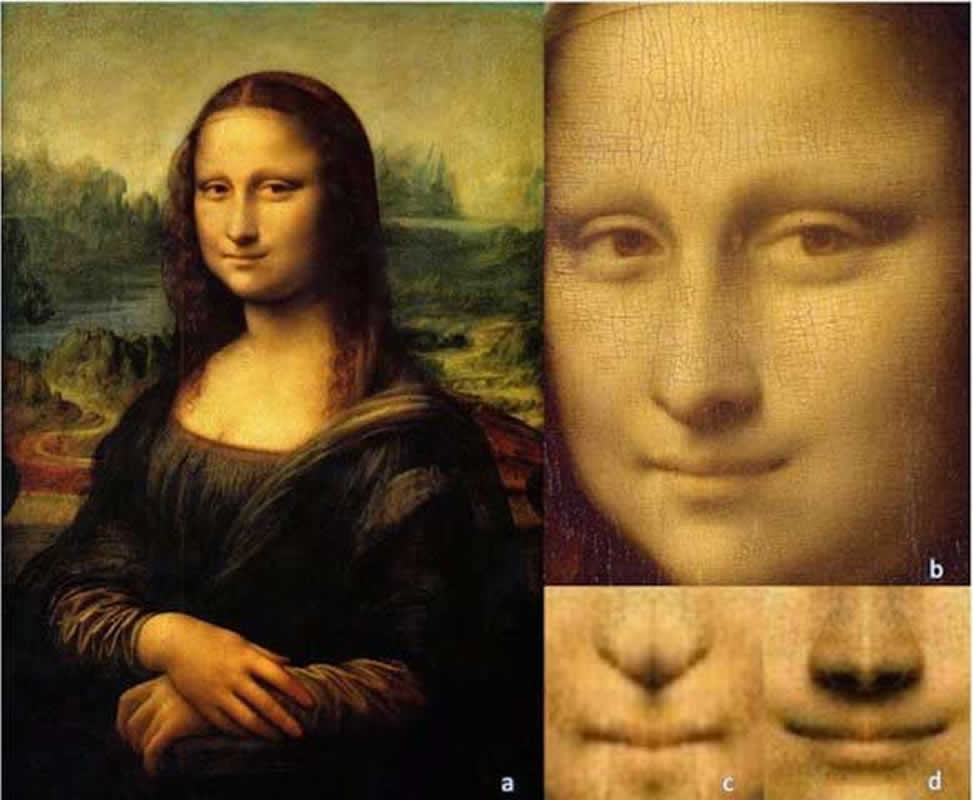Summary: Neuroscientists draw the conclusion Mona Lisa’s famous enigmatic smile isn’s a genuine smile at all.
Source: St George’s University of London
New research has found that the Mona Lisa’s famed smile is almost certainly ‘forced’ –raising the intriguing possibility that Leonardo deliberately portrayed her that way.
A trio of neuroscientists set out to investigate the truth of theMona Lisa’s expression and apply neuroscientific principles to the world’s best-known painting.
Dr Lucia Ricciardi at St George’s, University of London is part of the “Motor Control and Movement Disorders” group and has a special interest in facial expressivity and facial emotion recognition in people with movement disorders. She has carried out research into conditions such as Parkinson’s Disease which is characterised by a reduced facial expressivity and has begun to investigate the facial expressions of healthy subjects. Together with colleagues Luca Marsili of the University of Cincinnati and Matteo Bologna of Rome’s ‘Sapienza’ University, she set out to find if the mysterious smile’s secrets could be unlocked.
Firstly they investigated the mechanism of the expression. The researchers used a ‘chimeric face’ technique; cutting the mouth in half and placing each half alongside its mirror image.
The two chimeric images were judged by a group of 42 healthy subjects and rated according to the expression perceived.
The subjects agreed that the left-left image showed happiness, while the right-right side image was less expressive, being perceived as neutral or even sad. This led to the researchers’ conclusion that the Mona Lisa is smiling asymmetrically.
The researchers then applied their neuroscientific knowledge to this conclusion. Dr Ricciardi explained: “According to the most accredited neuropsychological theories, if a smile is asymmetric it is usually non-genuine. While what we call a ‘Duchenne’ smile, a genuinely spontaneous smile, is bilateral and symmetrical. It’s also characterized by upper face activation and that also doesn’t seem to be the case in this portrait.”
More recently, research by Paul Ekman in this field has suggested that asymmetric smiles can be a sign of insincerity or of a lie.

So if her smile is ‘forced’, what could that mean? Dr Ricciardi explained: “Of course, we know that posing for a picture for many hours will result in a forced expression. But we also know that Leonardo was a master of ‘sfumato’ – the technique of shading which is used to demonstrate expression. He deliberately raised her left lip, as if to paint a smirk. He would have known that curving the lip on both sides and adding folds around the eyes would have shown a genuine smile. And he had this knowledge hundreds of years before Duchenne’s work in the 1800s. So we have enjoyed hypothesising that this asymmetry was a deliberate action. What we still don’t know is the reason that he portrayed her this way – so her smile is as elusive as ever!”
Source:
St George’s University of London
Media Contacts:
Lucia Ricciardi – St George’s University of London
Image Source:
The image is adapted from the St George’s University of London news release.
Original Research: Closed access
“Unraveling the asymmetry of Mona Lisa smile”. Luca Marsili, Lucia Ricciardi, Matteo Bologna.
Cortex. doi:10.1016/j.cortex.2019.03.020
Abstract
Unraveling the asymmetry of Mona Lisa smile
The Mona Lisa portrait, by Leonardo da Vinci, is one of the most famous paintings in the world. Over the years, there have been a number of debated topics on the painting, including the valence of the emotion expressed on her face. Nevertheless, the most recent interpretations agree that Mona Lisa expression is happiness. The smile asymmetry of Mona Lisa is another remarkable feature of the painting. We here asked forty-two healthy raters to judge which of the six basic emotions (or neutral expression) was expressed by the chimeric images of the left or right lower hemi face. We collected chosen responses, confidence levels and reaction times. Our results indicate that happiness is expressed only on the left side. According to some influent theories of emotion neuropsychology, we here interpreted the Mona Lisa asymmetric smile as a non-genuine smile, also thought to occur when the subject lies. Given that Leonardo was a great observer of human physiognomy we speculate on the intriguing possibility that Leonardo already knew the true meaning of asymmetric smile. Thus, Mona Lisa asymmetric smile could represent a stratagem Leonardo deliberately used to hold cryptic and enigmatic messages. Although the Mona Lisa smile continues to attract the attention of its observers, the true message it conveys remains elusive and many unsolved mysteries remain to be elucidated, perhaps via the knowledge of emotion neuropsychology.






